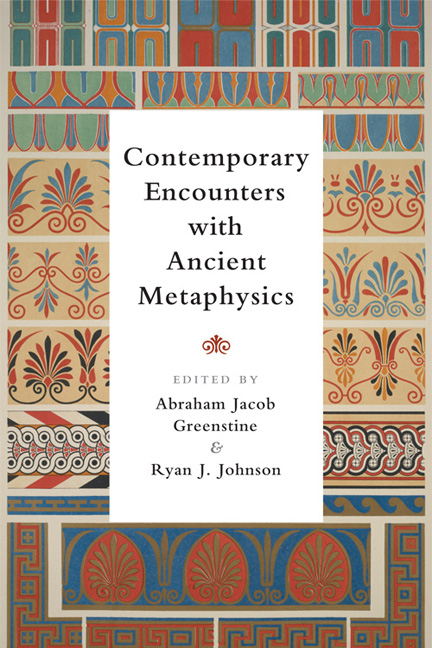Book contents
- Frontmatter
- Contents
- Acknowledgements
- Note on the Text
- Notes on Contributors
- 1 A Thousand Antiquities
- Part I Plato
- Part II Aristotle
- Part III Epicureans, Stoics, Skeptics, and Neo-Platonists
- 13 Lucretius and Naturalism [1961]
- 14 On Causality and Law in Lucretius and Contemporary Cosmology
- 15 On the Surface: The Deleuze-Stoicism Encounter
- 16 Contingency and Skepticism in Agamben's Thought
- 17 Plotinus’ “Reverse” Platonism: A Deleuzian Response to the Problem of Emanation Imagery
- Part IV Postscript
- Index
15 - On the Surface: The Deleuze-Stoicism Encounter
from Part III - Epicureans, Stoics, Skeptics, and Neo-Platonists
- Frontmatter
- Contents
- Acknowledgements
- Note on the Text
- Notes on Contributors
- 1 A Thousand Antiquities
- Part I Plato
- Part II Aristotle
- Part III Epicureans, Stoics, Skeptics, and Neo-Platonists
- 13 Lucretius and Naturalism [1961]
- 14 On Causality and Law in Lucretius and Contemporary Cosmology
- 15 On the Surface: The Deleuze-Stoicism Encounter
- 16 Contingency and Skepticism in Agamben's Thought
- 17 Plotinus’ “Reverse” Platonism: A Deleuzian Response to the Problem of Emanation Imagery
- Part IV Postscript
- Index
Summary
We begin with two events – two deaths, in fact. The first is the death of the Roman Stoic Seneca. After a complicated history as an imperial adviser to Nero, Seneca was ordered to commit suicide by that infamous Roman emperor. Affirming this fate, Seneca cut an artery on his arm in an attempt to bleed to death. Since he was so old and frail, however, his arteries were weak and barely able to pump blood; death would not be so easy for Seneca. He thus cut arteries on his leg and behind his knees, yet even this did not kill him. Mirroring the famous Socratic manner of death, Seneca then asked for hemlock. Painfully, the hemlock also did not bring the mortal relief. As a last resort, “having been carried into the bath, […] he was asphyxiated by the steam, [and] cremated without any of the solemnity of a funeral.” The warm waters finally brought about the event of Seneca's death. The second death is the suicide of Gilles Deleuze. On Saturday, 4 November 1995, after years of pain and suffering, Deleuze leapt from the window of his third-floor apartment, on Avenue Nielin Paris's seventeenth arrondissement. Similar to what he wrote of Beckett, Deleuze had been exhausted by the effects of a lifelong respiratory illness, a tracheotomy, and attacks of suffocation that left him “chained like a dog” to an oxygen machine. In those last few months, he could barely speak or even hold a pen. Defenestration was the evental form of his death. For Seneca and Deleuze, suicide is an event, and as such it is intimately two-sided, simultaneously the most personal and the most impersonal act. Deleuze cites Blanchot in describing “suicide as the wish to bring about the conscience of the two faces of death.” The double-sided form of suicide allows us to bring together these two faces of death, two double-sided events, a dual death.
This twofold character, along with the ever-so-thin threshold separating and connecting these two sides, creates a continuous crack in the event. This crack is expressed in the paradoxical Stoic theory of incorporeals and further emphasized in Deleuze's reading of Stoic ontology. In this essay, we explore this strand of the Deleuze-Stoic encounter.
- Type
- Chapter
- Information
- Contemporary Encounters with Ancient Metaphysics , pp. 270 - 288Publisher: Edinburgh University PressPrint publication year: 2017

